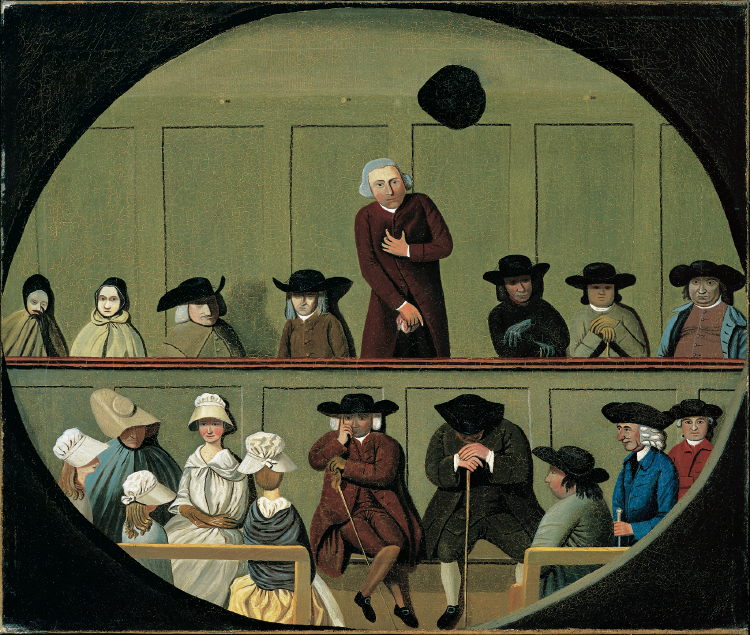Printed Page 120-102-101(cont.)
America’s History: Printed Page 120
America: A Concise History: Printed Page 102
America’s History: Value Edition: Printed Page 101
Diversity in the Middle Colonies
The Middle colonies — New York, New Jersey, and Pennsylvania — became home to peoples of differing origins, languages, and religions. Scots-Irish Presbyterians, English and Welsh Quakers, German Lutherans and Moravians, Dutch Reformed Protestants, and others all sought to preserve their cultural and religious identities as they pursued economic opportunity. At the same time, rapid population growth throughout the region strained public institutions, pressured Indian lands, and created a dynamic but unstable society.

A Quaker Meeting for Worship
Quakers dressed plainly and met for worship in unadorned buildings, sitting in silence until inspired by an “inner light.” Women spoke during meetings on terms of near-equality to men, a tradition that prepared Quaker women to take a leading part in the nineteenth-century women’s rights movement. In this English work, titled Quaker Meeting, an elder (his hat on a peg above his head) conveys his thoughts to the congregation. Museum of Fine Arts, Boston. M. and M. Karolik Collection.